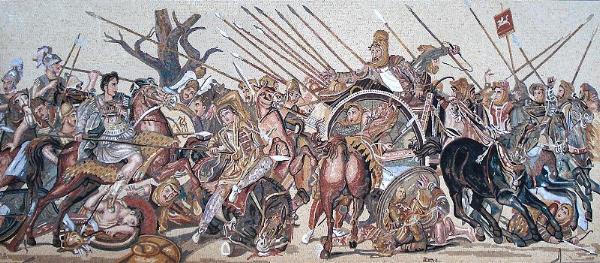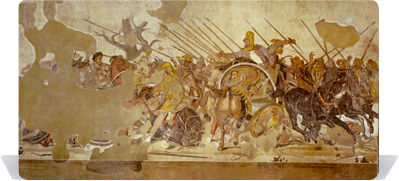Reconstruction of the mosaic
by Dr Werner Kruck
Anyone who studies the Alexander mosaic will ask himself, sooner or later, how this masterpiece would have looked before it was damaged
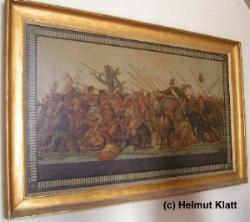
While looking for useful information, I found a singular photograph of an oil painting directly from the National Museum of Archaeology in Naples (MANN), where the original from Pompeii is located. There are of course many pictures of the incomplete mosaic, but that which hangs to the left of it, the oil painting, is apparently only noted by a few. With that, the trail was taken up, albeit this photo was not yet suitable as a model for a new mosaic to be laid. Due to the reflection of light, it is precisely on the left-hand side of the picture, where the mosaic has the biggest gaps, that the details are unrecognisable. There was no other choice: I had to go to Naples.
The next thing you will see here is a technically-processed photograph of the oil painting. Of course, there are even better detailed photographs of the critical areas. Whether the mosaic every really looked like this, is not known. The picture was painted in the years immediately after the discovery of the mosaic (1831), but it is simply not known what information the painting was based on and why it turned out precisely the way it did. Was it possible to see more of the picture when it was initially uncovered than was ultimately salvaged? No matter. Even if all of this is based on pure fantasy, the composition is internally consistent.
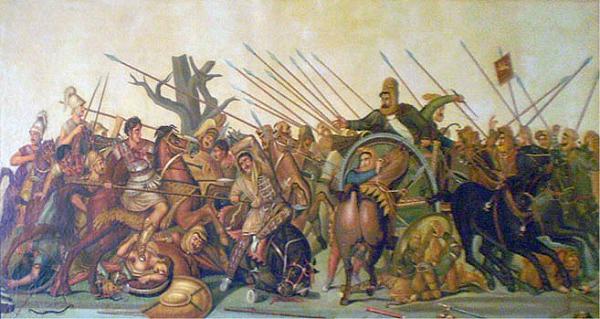
I returned home happily with my booty, having taken a big step closer to realising my actual dream of putting together a completed mosaic of Alexander´s battle.

The next step involved the creation of the template layer. Each mosaic must first be drawn by hand, as when the stones are being laid later, you sit directly in front of them and have no overview of the shapes and proportions. A layer of plastic film is placed on top of the painted template, followed by a reinforcement net, as is worked into the plastering of external facades in construction. It is still possible to see the template through the holes in the net, while on the other hand the net is secure enough to hold the mosaic stones as they are glued in. At a later point in the laying the grout can come through the back of the mesh of the net to the stone and bind this to the masonry.
Due to the heavy weight we decided to create the first copy of the Alexander mosaic not in the original size of 582 x 313 cm, but at a reduced size of 420 x 180 cm. Even this mosaic weighed 130 kg and was made up of approximately 150,000 stones.
Admittedly, the original mosaic is far more immense and imposing. While we were working with 2 - 3 stones per cm2, the original had 5 - 6 stones per cm2. Over the entire surface, the original mosaic layers of Pompeii worked with approximately one and a half million little stones. A truly gigantic feat. Even the production of the incomplete copy of the mosaic exhibited in Naples, which is now laid in Pompeii, cost more than €500,000. We could not and did not wish to pitch our mosaic at this level.
Our aim was a complete and correct overall impression of the mosaic, not a reproduction that meets with archaeological demands. But even our copy had to first be painted: 480 x 180 cm.
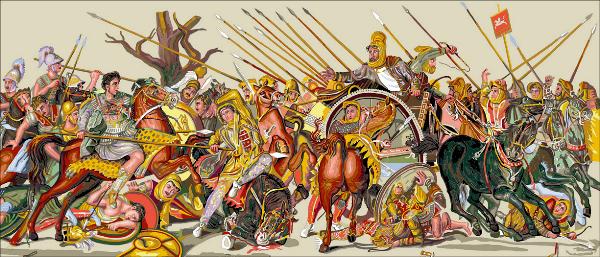
Based on this template, the mosaic which you can finally see here was created. It can be purchased through our catalogue of items.
